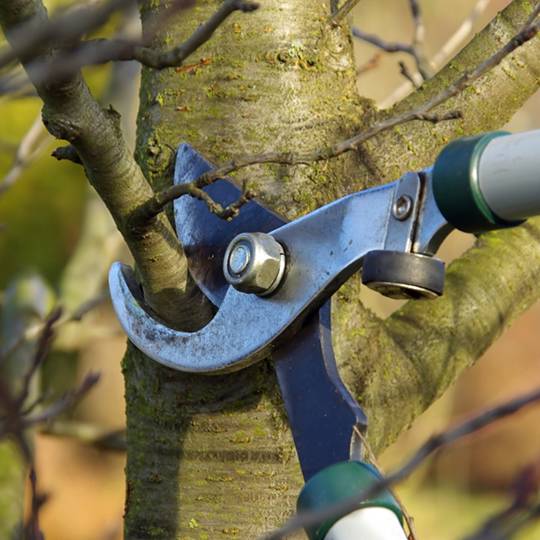
Whether you are pruning a tree to shape up a shaggy appearance or to remove dead or diseased branches, there are proper techniques to ensure that it gets the best treatment to stay healthy and attractive while thriving in your landscape.
Why Prune?
Health – Pruning is an important part of maintaining your tree’s well-being. One reason that dead or rotting branches need to be removed is because they make a good home for pests. If only part of a tree gets a disease or infestation, you may be able to save the entire tree by removing a branch or two. Make sure to sterilize your tools after dealing with a diseased tree so that you don’t spread the pathogens to the next tree or shrub you prune.
Visual Appearance – Proper pruning can improve a tree’s appearance by enhancing its shape and helping it to bloom better. But keep in mind that too much cutting can be stressful to the tree’s health.
Safety – Dead or diseased branches are a hazard—they are primed and ready to fall at any time.
Branches that are obstructing walkways, rubbing against the sides or roof of your house, or too close to power lines may need trimming as well.
When to Prune
When pruned properly, trees usually heal quickly and on their own, and younger trees are the most resilient. The best time to prune is during the cooler months when the tree’s growth cycle is dormant. Also, from late fall through winter, disease pathogens are less active and therefore less likely to attack the tree while it is healing. When the weather turns warmer, the open wound or cut on the tree is more susceptible to disease and pests.
More tips on when to prune:
- In the case of a diseased tree, if it has at least two-thirds of its branches in good health then it may be a good candidate for pruning.
- Prune only when necessary and never remove more than a quarter of the tree’s branches.
- Leave a limb alone if it is more than 10 centimeters in diameter or call in a tree expert.
How to Prune
- Make a partial cut on the underside of the branch about 4 to 5 inches from the trunk. This cut is to prevent the branch from prematurely breaking off or causing a major tear in the bark below the cut.
- Cut all the way through the branch about 2 to 3 inches further out from the first cut.
- The final cut removes the stub. This cut should be made outside the branch collar—the slightly puffy area where the branch and trunk meet. You should never remove the branch collar.
Many people feel that after pruning they should cover the cut with tree paint or wound dressing, but research has shown it is not necessary and may even hinder the healing process.
If you need assistance pruning trees in your yard, contact Elite Tree Care today at 610-935-2279.
Need Help with Proper Tree Pruning?
Call Elite Tree Care today at 610-935-2279 and let's talk about how we can help you with Proper Tree Pruning and other Pennsylvania tree care services.
Get a Free Quote